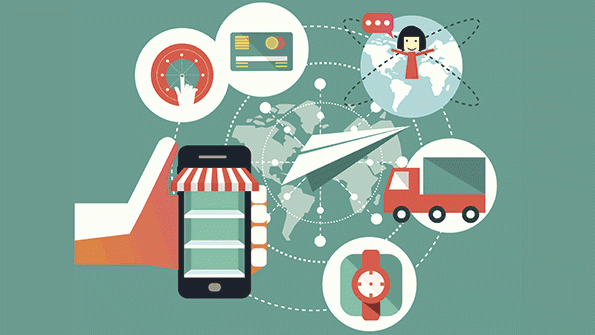CLICK HERE TO VIEW ORIGINAL WEB PAGE AT MATERIAL HANDELING AND LOGISTICS
By Gary Hanifan | MHLnews
Enterprises are stretching their boundaries to shape the next generation of products, services and business models. Supply chains need to keep pace and become more dynamic. As they embrace digital, companies need to reimagine what is possible within their supply chain operations and how they can use digital networks to add value to the bottom line.
Suffice it to say, the heyday of the traditional supply chain very linear and static in nature is over. Digital businesses have different requirements. More is expected from supply chains. They will need to not only address new business requirements, but also enable companies to meet new and changing customer requirements.
Do you have the ability to tailor fulfillment logistics to accommodate customers who “want it all”? To be clear, they want your best prices. They want your deliveries to accommodate their every whim.
Remember the classic movie, “When Harry Met Sally”? Sally didn’t just order off the menu. She was today’s typical customer. She wanted her order the way she wanted it. A chef salad and apple pie a la mode became a salad with oil and vinegar on the side. The pie needed to be heated. Replace the ice cream with strawberries and whipped cream, but on the side—if they had it. And, if they didn’t, a warm piece of pie would do.
In reality, that order pales by comparison with what many consumers want from today’s businesses. At least the waitress could deliver all of the food to the same location and in the conventional order in which food is served.
But today’s consumers want to buy things on a one-off basis. They want to take advantage of the sale prices. They want to order some things on a subscription basis, and they may not want everything in their order delivered to the same place, let alone the same day.
Creating a supply chain that can respond to each customer’s unique desires—accommodate unexpected delivery schedule changes and shift production to a different location when the situation dictates it—is not necessarily easy. Responding will require shifting your thinking from a traditional linear view and re-imagining your supply chain as a digital supply network.
Connected, Intelligent, Scalable and Rapid
Digital supply networks are based on an understanding of what digital technologies can enable how they can change the supply chain function and deliver value to stakeholders. They enable the materials, products and supplies that move across an enterprise, related data and those who manage and interact with those items to stay in touch with them despite their location.
In digital supply networks, the four elements of supply chains talent, physical, information and financial are connected by the use of social media, mobile communications, advanced analytics, cloud computing, and others, such as 3-D printing. That gives them the flexibility and transparency businesses need. Digital supply networks are connected, intelligent, scalable and rapid.
Being connected is important. Like air traffic control, a central supply chain control tower monitors and directs activities throughout the supply chain, making connectivity possible. It uses the real-time data the company collects to integrate supply chain processes and tools, and generates business outcomes. With its digital dashboards, the control tower becomes a repository of information about sourcing, production, shipments, inventory, talent and infrastructure that enables management decisions up and down the supply chain.
That information contributes to an increasingly intelligent, automated environment that uses analytics, cognitive equipment and smart apps to translate data into valuable information. The results: more well-informed decision making, more automation and accelerated innovation.
Such digitally-enabled supply chains are scalable, making it possible to add or delete partners and suppliers from the supply chain. Even the adjustments associated with the acquisition or divestment of a business can be much more readily addressed in digital supply networks where processes are easier to optimize and duplicate, and errors are easier to spot. They gain speed with decision support enabled by analytics, facilitating rapid response capabilities that make it possible for companies to grab new opportunities.
So build the elasticity your company needs to successfully compete and go where it hasn’t gone before with digital supply networks. Traditional supply chain models carried you to this point, but it will be the connectivity, intelligence, scalability and rapid nature of digital supply networks that will carry your organization into the future.


